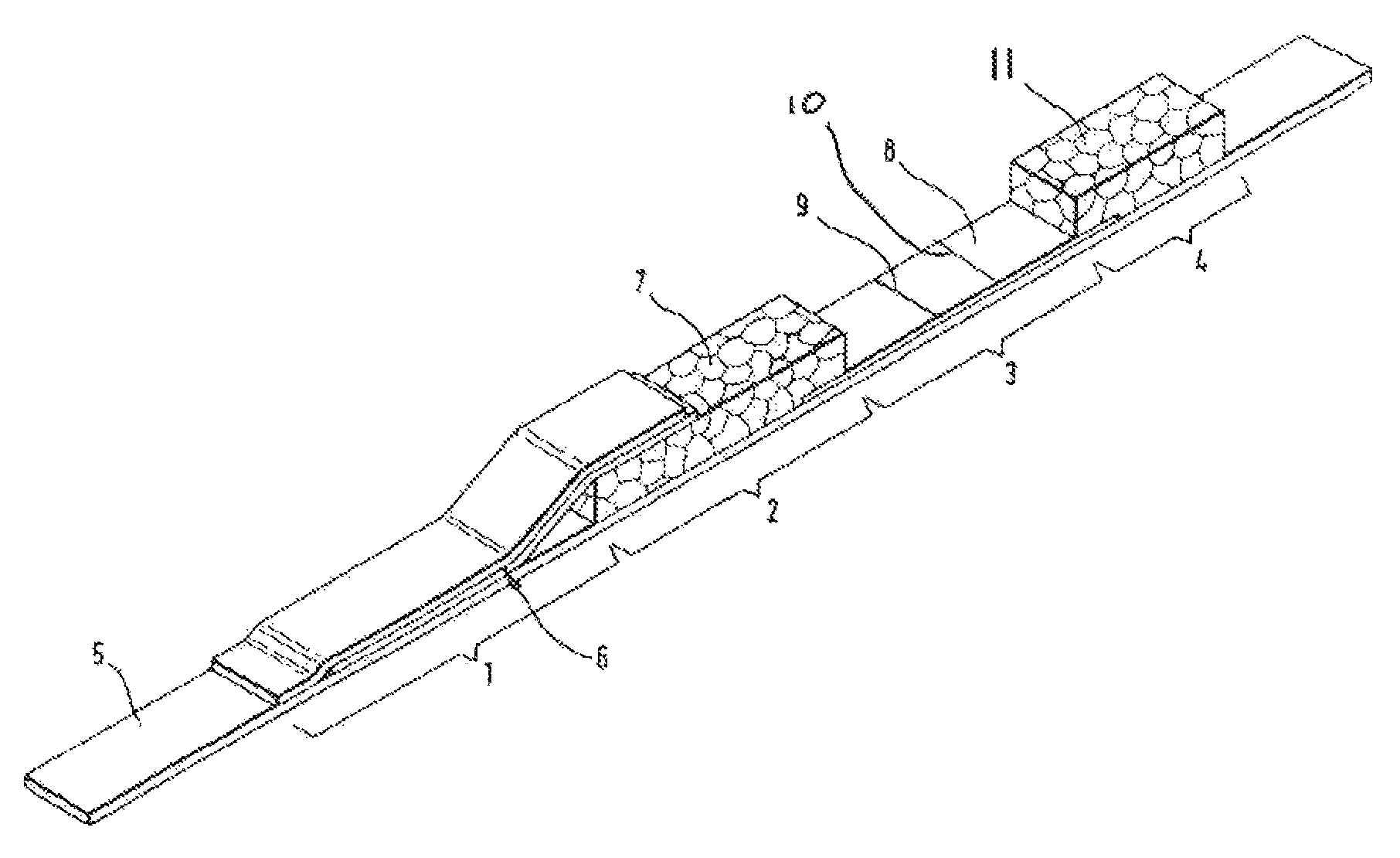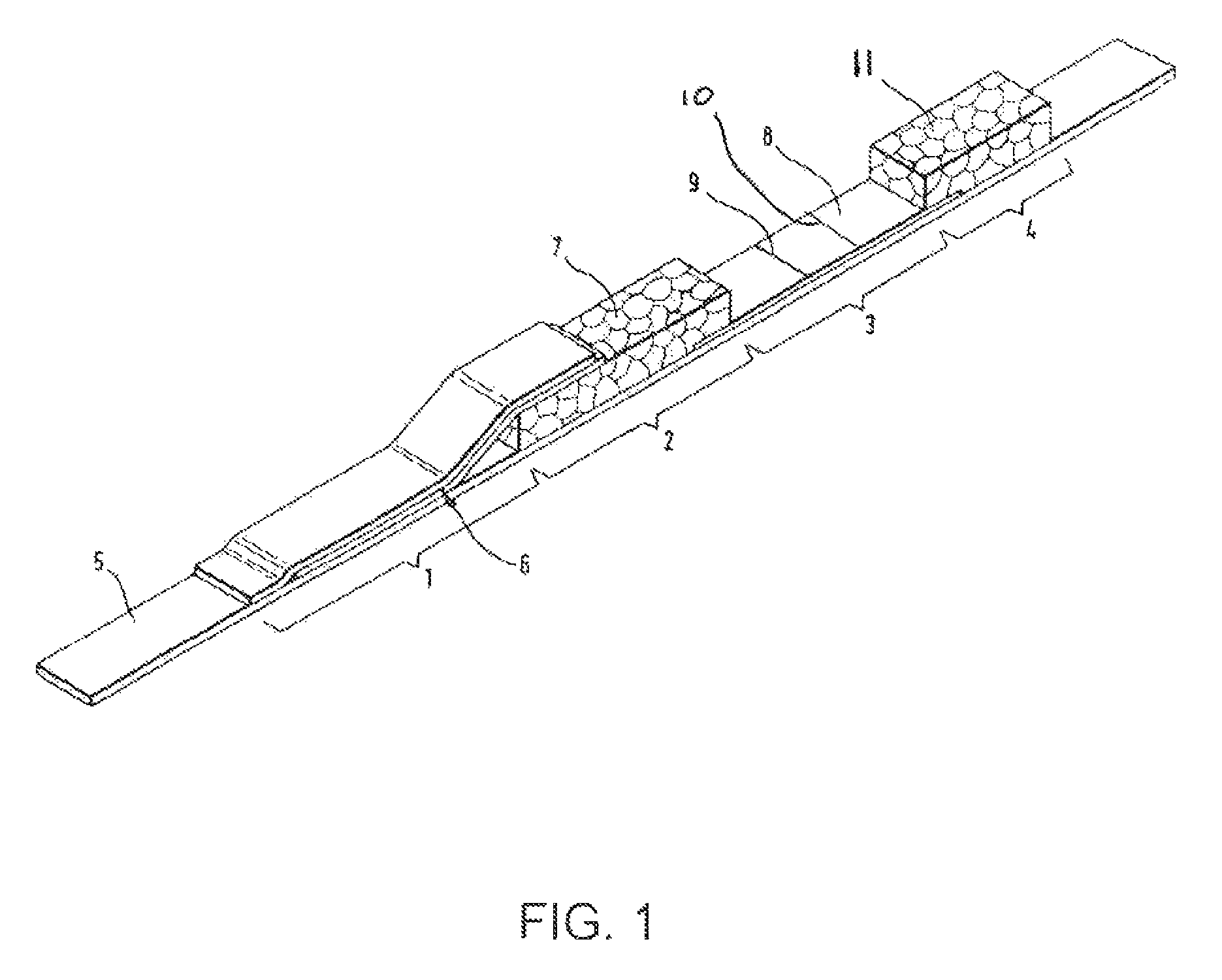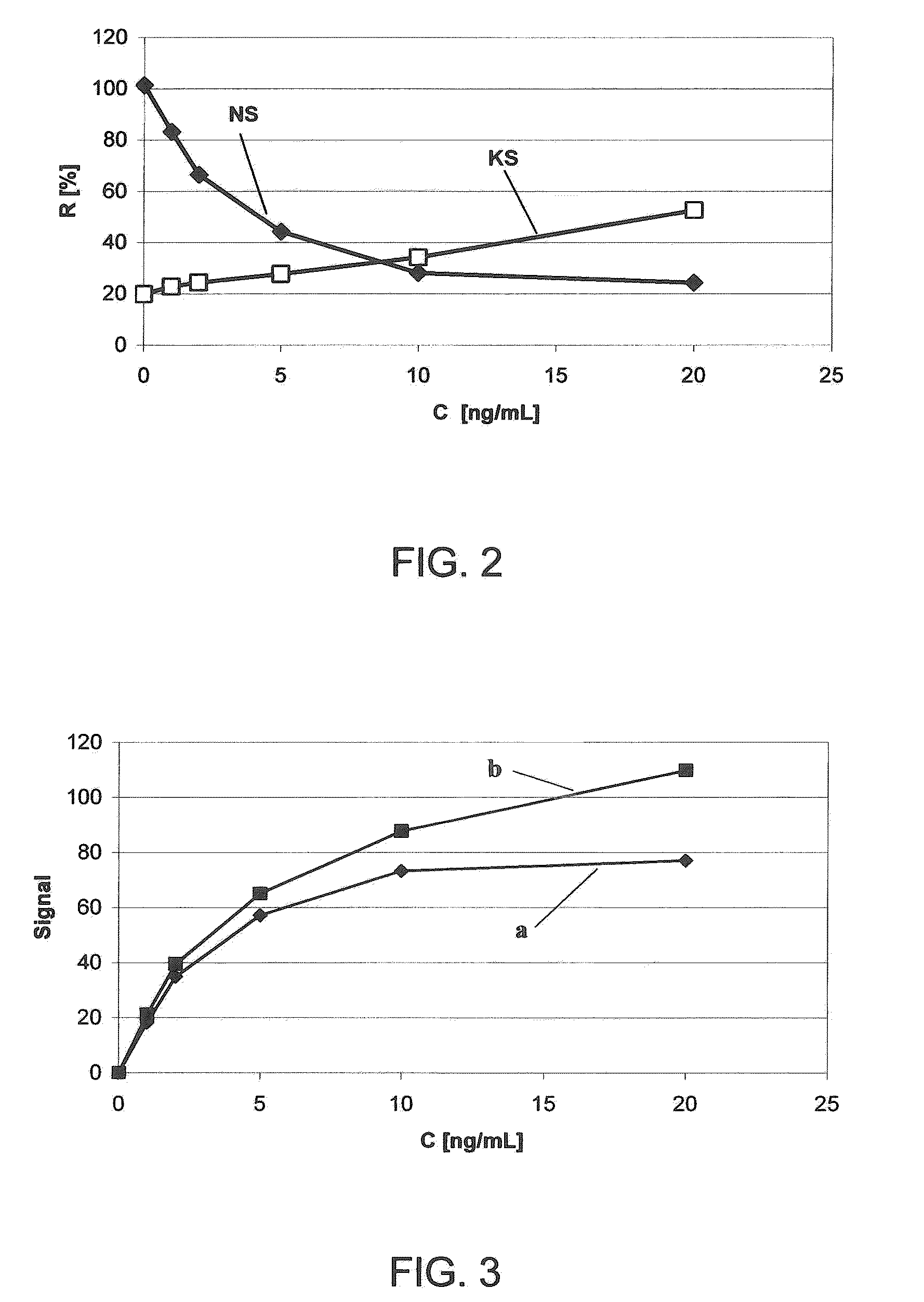Method for increasing the dynamic measuring range of test elements based on specific binding reactions
a specific binding reaction and dynamic measurement technology, applied in the field of analytical test devices, can solve the problems of inability to quantitatively detect any concentration of analyte in the sample, limited detection optics sensitivity, and measurement rang
- Summary
- Abstract
- Description
- Claims
- Application Information
AI Technical Summary
Benefits of technology
Problems solved by technology
Method used
Image
Examples
examples
1) Preparation of a Test Device to Determine Antigens from Whole Blood (cf FIG. 1)
[0081]The test device (FIG. 1) consists of a support material (5) on which a sample application zone (1), an erythrocyte separation zone (2), a detection zone (3) and a suction zone (4) is applied. A sample application matrix (6) which partially overlaps the erythrocyte separation matrix (7) is disposed in the sample application zone (1). The erythrocyte separation matrix (7) in turn overlaps somewhat the detection matrix (8) (detection zone) on which polystreptavidin is immobilized in the form of a line (9) as a detection line and antigen or antigen analogue is immobilized for example as a synthetic or recombinant antigen peptide in the form of a line (10) as a control line. A suction matrix (11) overlaps somewhat the detection matrix (8). All those reagents are accommodated in the sample application matrix (6) which are required to form a complex with the analyte to be detected. In the present case t...
PUM
| Property | Measurement | Unit |
|---|---|---|
| thickness | aaaaa | aaaaa |
| thickness | aaaaa | aaaaa |
| thickness | aaaaa | aaaaa |
Abstract
Description
Claims
Application Information
 Login to View More
Login to View More - R&D
- Intellectual Property
- Life Sciences
- Materials
- Tech Scout
- Unparalleled Data Quality
- Higher Quality Content
- 60% Fewer Hallucinations
Browse by: Latest US Patents, China's latest patents, Technical Efficacy Thesaurus, Application Domain, Technology Topic, Popular Technical Reports.
© 2025 PatSnap. All rights reserved.Legal|Privacy policy|Modern Slavery Act Transparency Statement|Sitemap|About US| Contact US: help@patsnap.com



